Abstract
A retrospective study of the antibody response to Pasteurella haemolytica was conducted by using sera from 368 feedlot cattle divided among five experiments. In three experiments, live vaccines or a bacterin were administered to some of the cattle and others were left as nonvaccinated controls. In two experiments, cattle were not vaccinated. Clinical signs of disease with subsequent recovery developed in 48.0% of the cattle, and 10.3% of the cattle died. Vaccination had no apparent effect on morbidity or mortality. At the time of purchase, 78% of the cattle had low antibody titers (less than 25) as measured by a quantitative fluorometric immunoassay. In most groups of cattle (both vaccinated and nonvaccinated), there was a significant rise in mean antibody titers between the time of purchase and days 28 to 32 in the feedlot. The antibody titers at the time of shipment and health status of cattle. The antibody ratios were significantly greater for cattle that became sick and then recovered compared with those of cattle that remained healthy. Although significance could not be established, antibody titers at the time of shipment were higher for cattle that remained healthy compared with cattle that became sick and then recovered.
Full text
PDF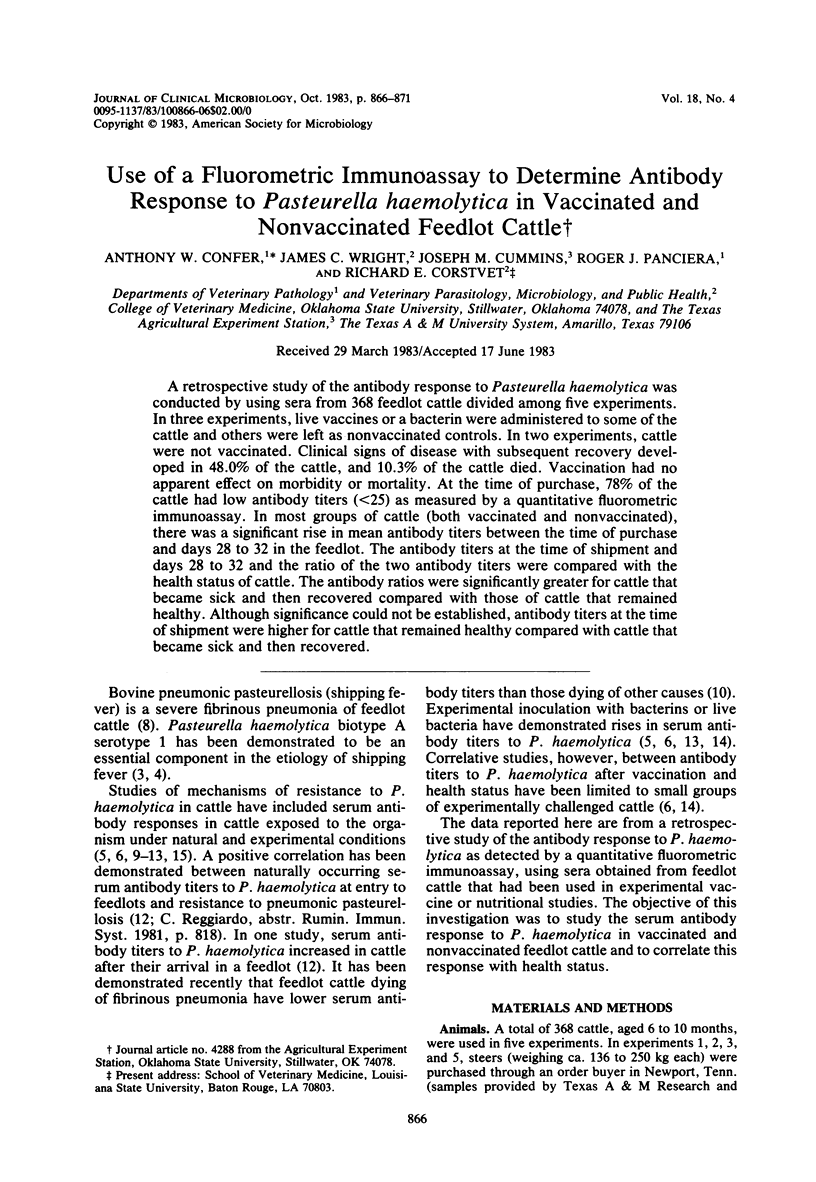
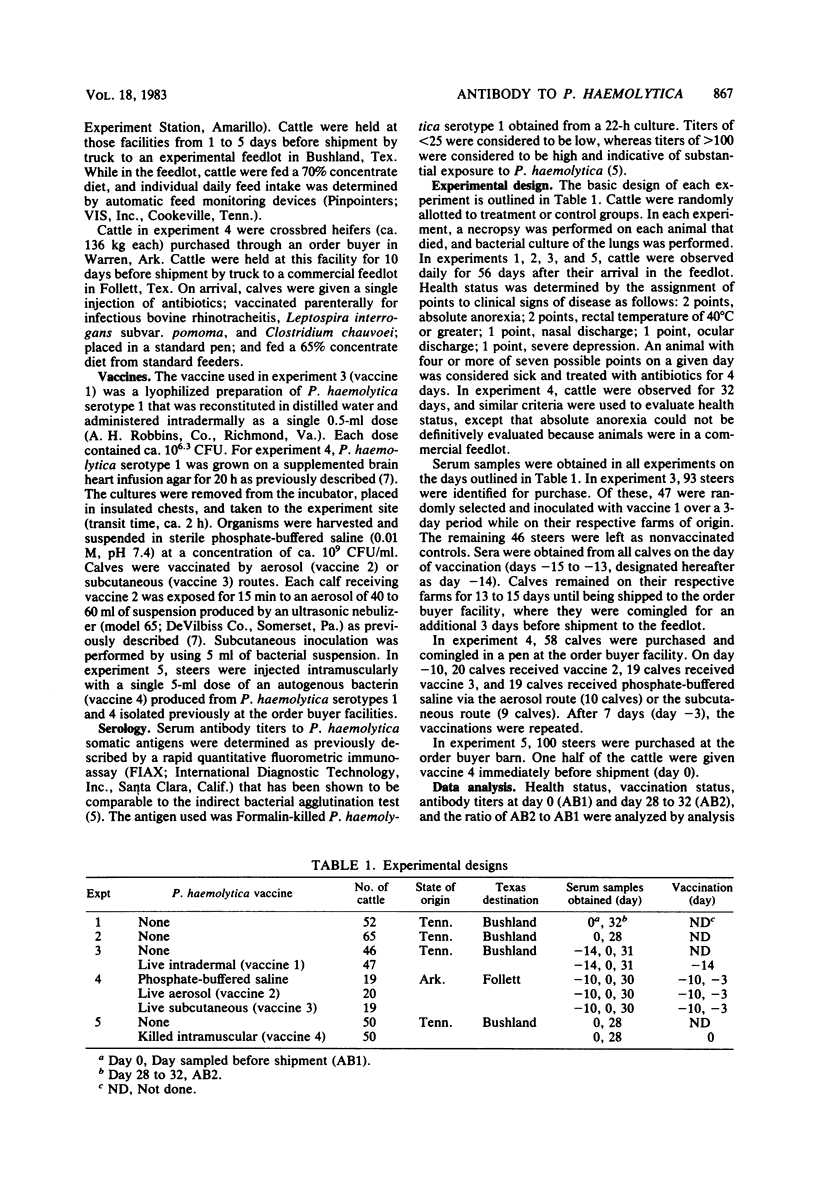
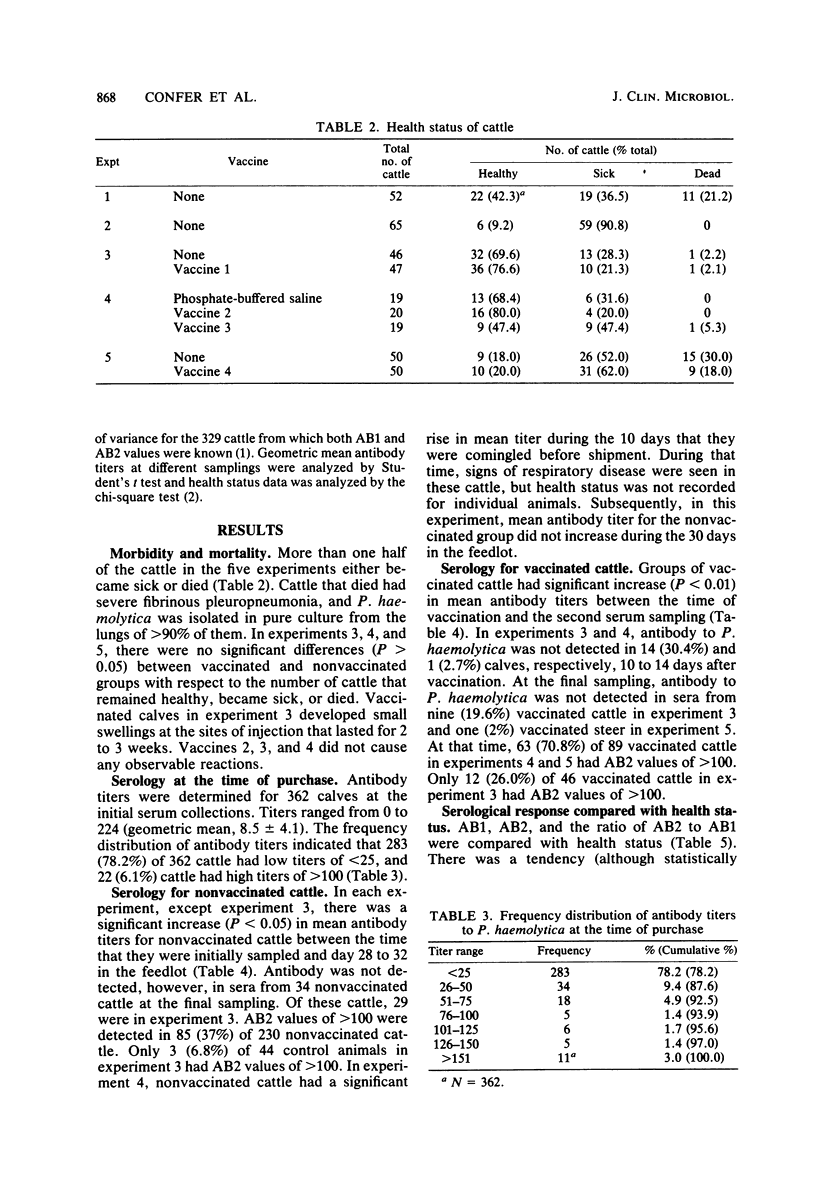

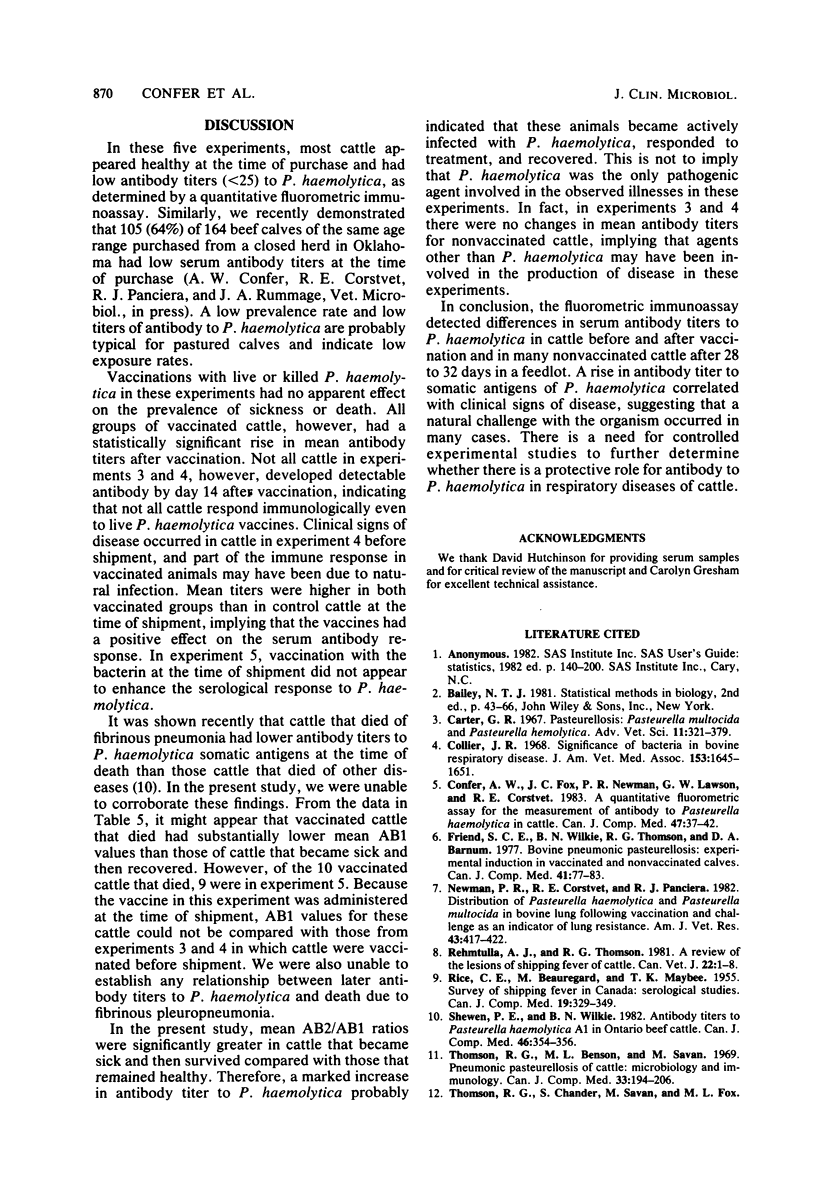
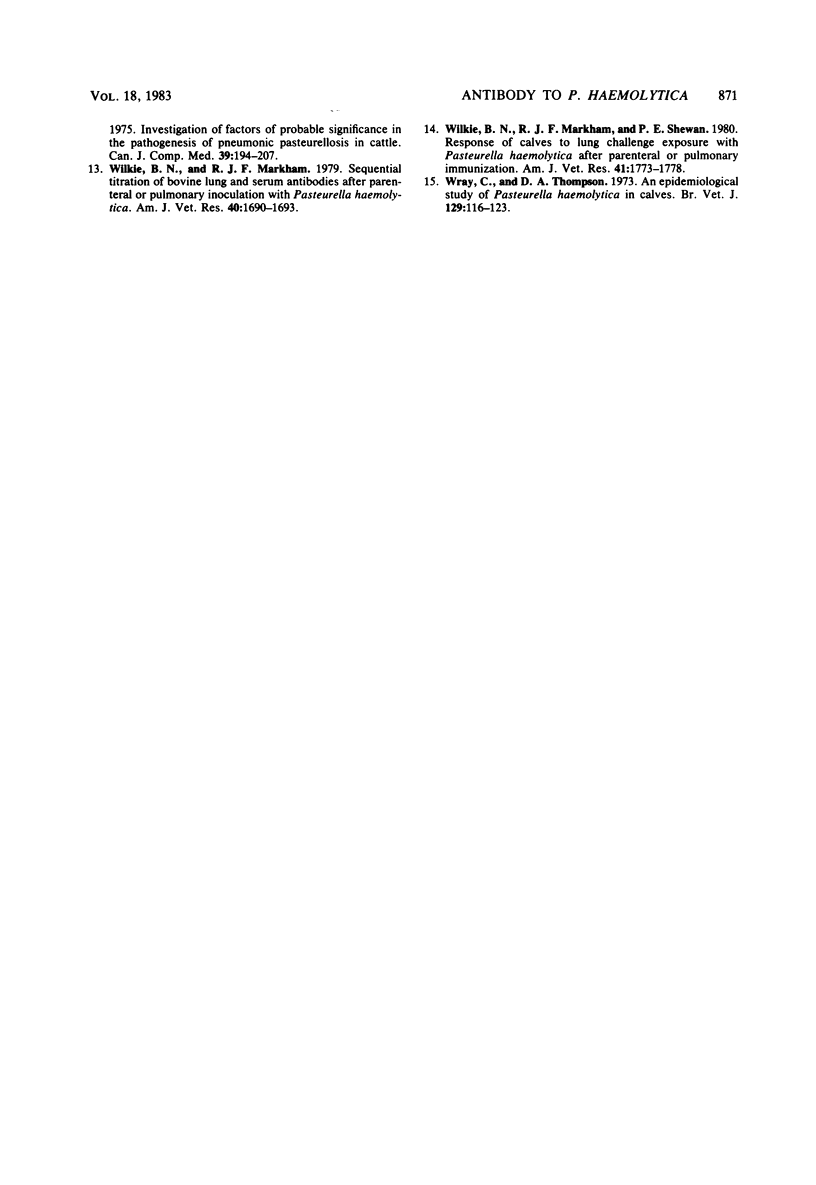
Selected References
These references are in PubMed. This may not be the complete list of references from this article.
- Carter G. R. Pasteurellosis: Pasteurella multocida and Pasteurella hemolytica. Adv Vet Sci. 1967;11:321–379. [PubMed] [Google Scholar]
- Collier J. R. Significance of bacteria in bovine respiratory disease. J Am Vet Med Assoc. 1968 Dec 15;153(12):1645–1651. [PubMed] [Google Scholar]
- Confer A. W., Fox J. C., Newman P. R., Lawson G. W., Corstvet R. E. A quantitative fluorometric assay for the measurement of antibody to Pasteurella haemolytica in cattle. Can J Comp Med. 1983 Jan;47(1):37–42. [PMC free article] [PubMed] [Google Scholar]
- Friend S. C., Wilkie B. N., Thomson R. G., Barnum D. A. Bovine pneumonic pasteurellosis: experimental induction in vaccinated and nonvaccinated calves. Can J Comp Med. 1977 Jan;41(1):77–83. [PMC free article] [PubMed] [Google Scholar]
- Newman P. R., Corstvet R. E., Panciera R. J. Distribution of Pasteurella haemolytica and Pasteurella multocida in the bovine lung following vaccination and challenge exposure as an indicator of lung resistance. Am J Vet Res. 1982 Mar;43(3):417–422. [PubMed] [Google Scholar]
- Rehmtulla A. J., Thomson R. G. A review of the lesions in shipping fever of cattle. Can Vet J. 1981 Jan;22(1):1–8. [PMC free article] [PubMed] [Google Scholar]
- Rice C. E., Beauregard M., Maybee T. K. Survey of Shipping Fever in Canada: Serological Studies. Can J Comp Med Vet Sci. 1955 Nov;19(11):329–349. [PMC free article] [PubMed] [Google Scholar]
- Shewen P. E., Wilkie B. N. Antibody titers to Pasteurella haemolytica A1 in Ontario beef cattle. Can J Comp Med. 1982 Oct;46(4):354–356. [PMC free article] [PubMed] [Google Scholar]
- Thomson R. G., Benson M. L., Savan M. Pneumonic pasteurellosis of cattle: microbiology and immunology. Can J Comp Med. 1969 Jul;33(3):194–206. [PMC free article] [PubMed] [Google Scholar]
- Wilkie B. N., Markham R. J. Sequential titration of bovine lung and serum antibodies after parenteral or pulmonary inoculation with Pasteurella haemolytica. Am J Vet Res. 1979 Dec;40(12):1690–1693. [PubMed] [Google Scholar]
- Wilkie B. N., Markham R. J., Shewen P. E. Response of calves to lung challenge exposure with Pasteurella haemolytica after parenteral or pulmonary immunization. Am J Vet Res. 1980 Nov;41(11):1773–1778. [PubMed] [Google Scholar]
- Wray C., Thompson D. A. An epidemiological study of Pasteurella haemolytica in calves. Br Vet J. 1973 Mar-Apr;129(2):116–123. doi: 10.1016/s0007-1935(17)36534-x. [DOI] [PubMed] [Google Scholar]


